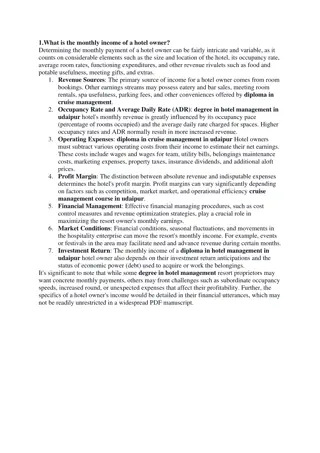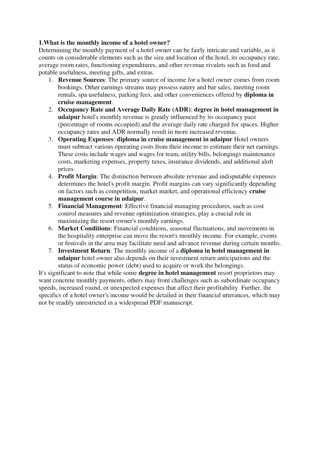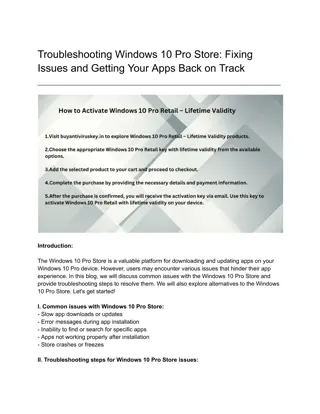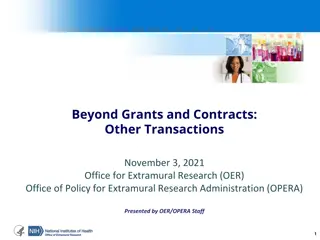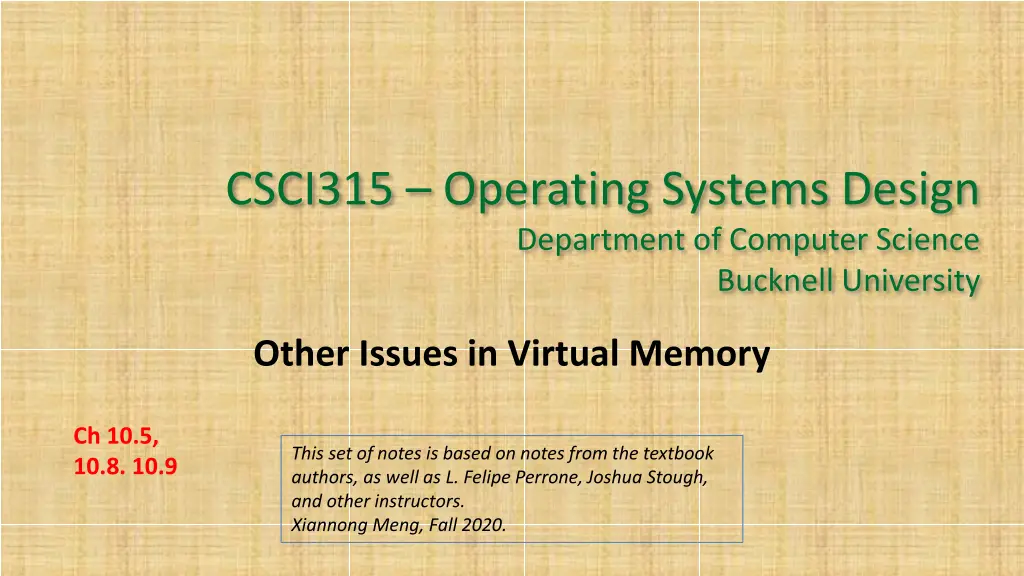
Understanding Major and Minor Page Faults in Virtual Memory Management
Learn about major and minor page faults in virtual memory, their causes, how to observe them in Linux, and the importance of reclaiming free memory to optimize performance in operating systems design.
Download Presentation

Please find below an Image/Link to download the presentation.
The content on the website is provided AS IS for your information and personal use only. It may not be sold, licensed, or shared on other websites without obtaining consent from the author. If you encounter any issues during the download, it is possible that the publisher has removed the file from their server.
You are allowed to download the files provided on this website for personal or commercial use, subject to the condition that they are used lawfully. All files are the property of their respective owners.
The content on the website is provided AS IS for your information and personal use only. It may not be sold, licensed, or shared on other websites without obtaining consent from the author.
E N D
Presentation Transcript
CSCI315 Operating Systems Design Department of Computer Science Bucknell University Other Issues in Virtual Memory Ch 10.5, 10.8. 10.9 This set of notes is based on notes from the textbook authors, as well as L. Felipe Perrone, Joshua Stough, and other instructors. Xiannong Meng, Fall 2020.
Overview Major and minor page faults Reclaiming free memory Virtual memory for kernel process(es)
Major and Minor Page Faults A page fault occurs when a page needed by a process does not have a valid mapping in its page table (valid bit == 0). However, the needed frame might be actually in memory! It may just not be mapped to the process. If the frame needed is NOT in memory, we call this fault a major page fault the frame has to be loaded from disk. If the frame needed is in memory, we call this fault a minor page fault the mapping can be established without a disk I/O.
Reasons for Minor Page Fault There are two reasons for minor page fault to occur. 1. A process may reference a shared page that is in memory, but not mapped to the current process. 2. A frame has been moved to the free list by the memory management system. (We ll discuss the issue of reclaiming free frames later.) In either case, all the MMU needs to do is to update the page table reference, much less expensive than reading the frame from disk.
Observing Major and Minor Faults In Linux, one can view the number of major and minor page faults using the ps (process status) command. ps -eo min_flt,maj_flt,cmd There is no space in min_flt,maj_flt,cmd The command means show all processes with minor and major page faults caused by all commands.
Sample Output From our Linuxremote1, the following are some sample output. MINFL 4618573 1068498 17611 1851 MAJFL CMD 3819 1206 2312 0 /usr/sbin/sshd D /usr/lib/systemd/systemd-logind /sbin/auditd vim Some notes: 1. Because large number of processes are running, you d use grep command to extract the output, e.g., ps eo min_flt,maj_flt,cmd | grep sshd D 2. Why the number of major fault for vim is zero?
Reclaiming Free Memory The issue of reclaiming free memory: If we wait until a major page fault, it is too costly! The MMU tries to avoid as much as possible any major faults. One practical solution is to reclaim free memory when possible. In a global page-replacement policy, the MMU periodically reclaims free frames from all processes under certain given condition(s).
Reclaiming Pages A strategy to implement global page-replacement policy All memory requests are serviced by the global free-frame list. Rather than waiting for the free list to drop to zero before we begin selecting pages for replacement, page replacement is triggered when the list falls below a certain threshold. This strategy attempts to ensure there is always sufficient free memory to satisfy new requests.
Allocating Kernel Memory Algorithms so far are applied to user processes. Kernel processes need special consideration. Often allocated from a separate free-memory pool Kernel requests memory for structures of varying sizes Some kernel memory needs to be contiguous i.e., for device I/O
Buddy System Allocates memory from fixed-size segment consisting of physically-contiguous pages Memory allocated using power-of-2 allocator Satisfies requests in units sized as power of 2 Request rounded up to next highest power of 2 When smaller allocation needed than is available, current chunk split into two buddies of next-lower power of 2 Continue until appropriate sized chunk available
Buddy System Example For example, assume 256KB chunk available, kernel requests 21KB Split into ALand AR of 128KB each One further divided into BL and BR of 64KB One further into CL and CR of 32KB each one used to satisfy the given request Advantage quickly coalesce unused chunks into larger chunk Disadvantage - fragmentation
Slab Allocator Alternate strategy Slab is one or more physically contiguous pages Cache consists of one or more slabs Single cache for each unique kernel data structure Each cache filled with objects instantiations of the data structure When cache created, filled with objects marked as free When structures stored, objects marked as used If slab is full of used objects, next object allocated from empty slab If no empty slabs, new slab allocated Benefits include no fragmentation, fast memory request satisfaction
Slab Allocator in Linux For example process descriptor is of type struct task_struct Approx 1.7KB of memory New task -> allocate new struct from cache Will use existing free struct task_struct Slab can be in three possible states 1. Full all used 2. Empty all free 3. Partial mix of free and used Upon request, slab allocator 1. Uses free struct in partial slab 2. If none, takes one from empty slab 3. If no empty slab, create new empty
Slab Allocator in Linux (Cont.) Slab started in Solaris, now wide-spread for both kernel mode and user memory in various OSes Linux 2.2 had SLAB, now has both SLOB and SLUB allocators SLOB for systems with limited memory Simple List Of Blocks maintains 3 list objects for small, medium, large objects SLUB is performance-optimized SLAB removes per- CPU queues, metadata stored in page structure SLUB: Unqueued SLAB allocator https://events.static.linuxfound.org/sites/events/files/slides/slaballocators.pdf https://lwn.net/Articles/229096/

![❤[READ]❤ Cosmic Biology: How Life Could Evolve on Other Worlds (Springer Praxis](/thumb/21556/read-cosmic-biology-how-life-could-evolve-on-other-worlds-springer-praxis.jpg)

